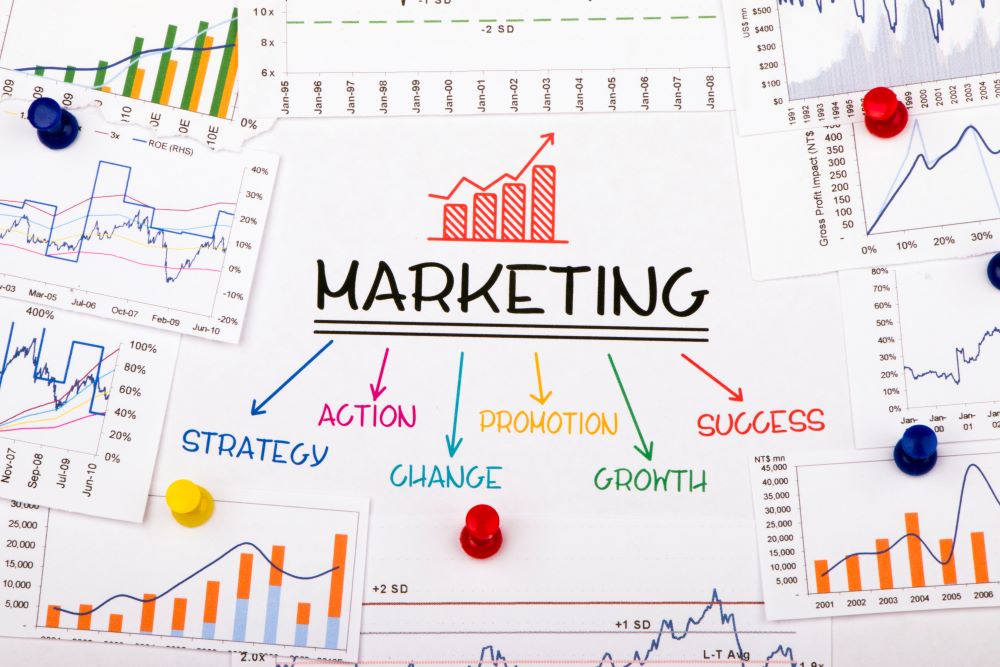Marketing is a fundamental operation for any business and organization. It increases brand awareness, attracts more clients, and increases revenue through sales. Despite being a vital aspect of any business, everyone needs a unique marketing strategy that best suits their business and target market. Brands invest a lot of time and resources to find the most effective marketing practices and strategies.
The best marketing solutions will change the buyer’s intent to be more favorable towards your brand. It will also resonate and be relevant to your target market. Marketing experts and agencies offer professional guidance and advice on picking the best marketing solutions for your business based on your marketing needs and objectives.
The main challenge in picking a marketing solution is determining whether to pick an inbound or outbound marketing solution. The two marketing solutions are effective in their unique way, and brands pick the most effective option based on their marketing goals, needs, and target market. Our marketing experts at Signal decided to clear the air and look at what each marketing solution entails. We have curated a detailed guide to help you decide which of the two marketing solutions is most suitable for your organization.
Inbound and Outbound Marketing
Which is the best marketing solution between inbound and outbound marketing? You can only answer this question when you fully understand what inbound and outbound marketing solutions entail and how they operate.
Inbound Marketing Solution
Inbound marketing solutions involve practices and strategies which attract customers to the brand through discovery. It’s also referred to as pull marketing. It focuses on increasing a brand’s digital footprint by offering resources like free information, which attracts an ideal audience to the brand. It is described by digital marketers as a more non-intrusive way of digital marketing. Inbound marketing solutions are achieved through:
- Search engine optimization (SEO)
- Search engine marketing (SEM/PPC)
- Social media marketing
- Content marketing
- Email marketing
Inbound marketing is very effective for businesses because it creates a two-way communication channel between the brand and the target market. It uses a problem-solving approach which establishes brand authority, spreads brand awareness, and builds customer relationships. Using inbound marketing solutions means you are meeting your ideal customer right at the moment they are seeking a solution to their problem, which you can help them solve.
Inbound marketing has continued to be successful due to the increasing number of internet users who are always looking for information. Brands can curate solutions and strategies that align with the buyer’s needs and interests. Customers naturally flock toward a source of reliable information or solutions that meet their needs and interests, putting trust in brands that provide solutions and answers.
Outbound Marketing Solutions
Outbound marketing is a push marketing strategy. It involves active marketing, where a brand seeks out an audience that shares its marketing message and value proposition, then injects advertising or sales calls in front of the target. Outbound marketing is more aggressive, and the marketing message is delivered to the target market regardless of their phase in the buying journey. It focuses more on sending the message to as many prospects as possible with the hope of triggering a purchasing intent from the small percentage of the audience that happens to be receptive to it.
Outbound Marketing encompasses most of the traditional advertising models we all know, which interrupt you during other activities:
- Print and TV ads
- Buying email lists
- Sponsoring an event
- Emailing and cold calling
- Using billboards
- Sponsoring booths at trade shows
- Flyers, streamers and posters
Even though outbound marketing solutions are “unwelcomed” and disruptive, they have been around for decades and are still effective. Businesses use outbound marketing because they have a faster return on investment and establish a connection with a prospect much faster. Tracking and monitoring the performance of outbound marketing is manageable and measurable. Additionally, brands can personalize their outbound marketing strategies to suit their marketing needs and target market.

Which is the Best Option? Inbound Vs Outbound
Inbound marketing and outbound marketing are two different methodologies which aim to achieve the same marketing goals of any brand or business. While inbound marketing focuses on baiting prospects using discovery and showing the usefulness of a brand to a customer’s needs and interests, the other focuses more on catching the buyer’s attention through persuasive messaging and awareness. The two operate differently and come with various benefits and limitations. However, businesses have realized the importance of combining the two marketing solutions when developing a marketing strategy for their brands.
Inbound and outbound marketing are two sides of the coin and work exceptionally well when combined. As one brings in the target market when they opt-in, the other focuses on positioning the brand to inform the target market, initiating a communication channel. Brands that have managed to reap the benefits of outbound and inbound marketing have combined the two marketing solutions effectively.
The following tips are vital in combining inbound and outbound marketing to achieve maximum success:
Understanding the strengths and limitations
Inbound marketing has gained immense popularity among brands because it achieves more lead generation by being more customer-focused. It seeks to fully understand the customers’ needs and intent when interacting with a brand. Buyer intent is very crucial in determining the purchasing decision of a prospect. Digital marketers spend a lot of resources and time trying to understand the buyer’s intent at every stage of their buying journey. Their main goal is to create inbound marketing campaigns to capture buyers’ attention.
The main challenge with inbound marketing is that it takes time. Results can start trickling in at least six months after implementation. Outbound marketing produces near instantaneous results after implementation but can be more costly and short-lived. The key challenge with outbound marketing is that most prospects might consider it annoying because it’s invasive. If a prospect doesn’t have a buying intent, they will find outbound marketing campaigns annoying.
Adopting an Omni-channel approach
Carefully analyze the strengths of inbound and outbound marketing. Inbound marketing campaigns excel by luring the customers to the brand by capturing buyers’ intent, while outbound marketing takes the message directly to the client and can bring faster results. An Omni channel approach would mean using an outbound marketing campaign to a prospect who has already opted in. The approach enhances immediate results without being invasive or annoying to prospects.
The other option would be combining inbound and outbound marketing campaigns across your marketing channels. You can implement outbound marketing tactics when initiating inbound marketing campaigns. For instance, you can have a cold calling or email outreach strategy using targeted ads when inbound marketing campaigns like blogs or social media posts.
Tracking and monitoring results
Tracking and monitoring marketing solutions are essential to ensure effective marketing strategies. Develop a tracking and monitoring system with key performance indicators for both inbound and outbound marketing solutions. Tracking results is critical in understanding the functionality of the marketing campaigns and how marketers can improve them to enhance effectiveness. Avoid mixing up the tracking and monitoring information for the two marketing solutions. Tracking the various campaigns also helps determine the return on investment of every marketing solution.
The adaptability and flexibility of your marketing campaigns will determine their effectiveness in the long run. We mentioned marketing is ever evolving, and sticking to one template from the beginning to the end, will not bring the expected results. It will also make the marketing strategies to be costly but not productive.
Combining Inbound and Outbound Marketing Tactics
Modern-day marketing is very competitive, and every brand thrives on remaining at the top of the game. The trick to having a robust and effective marketing strategy is combining inbound and outbound marketing solutions. Even though the two are different approaches, they can achieve the same results despite using different methodologies. Tapping into the strengths of the different methodologies will ensure you achieve maximum results from your marketing strategy. Additionally, you will know which methodology is most effective and which erases need to improve to enhance productivity.
Marketing requires flexibility and adaptability to the market trends, consumer preferences and intents. Apart from changing consumer preferences and new technologies, it would be best if you kept up with your competitors. You should set up your marketing strategies in an adaptable system to maintain its effectiveness at all times. Seeking professional marketing agencies’ services to evaluate your marketing strategies’ effectiveness will help increase your marketing strategies’ ROI.
Elevate your marketing solution by combining inbound and outbound marketing solutions with a team of experts at content creation, ad targeting, and buyer analytics. We’ll help you plot a way forward with just one consultation call.







